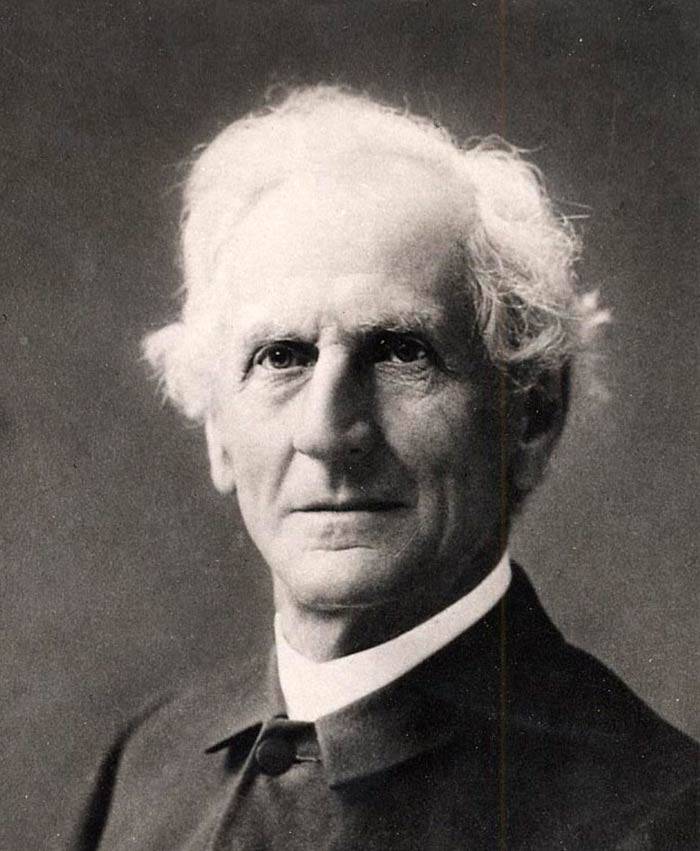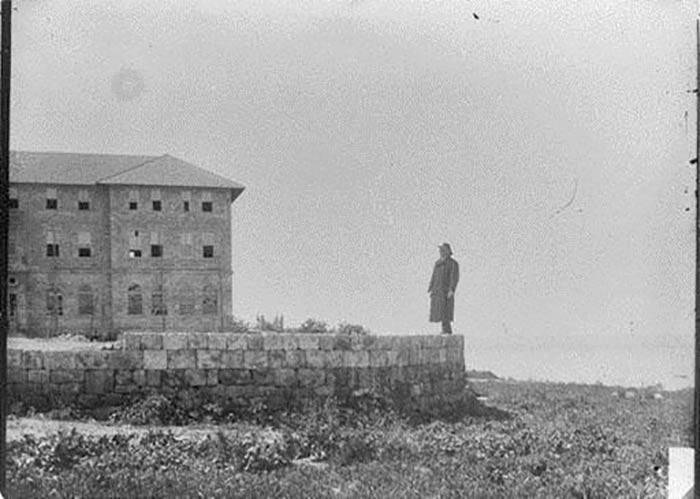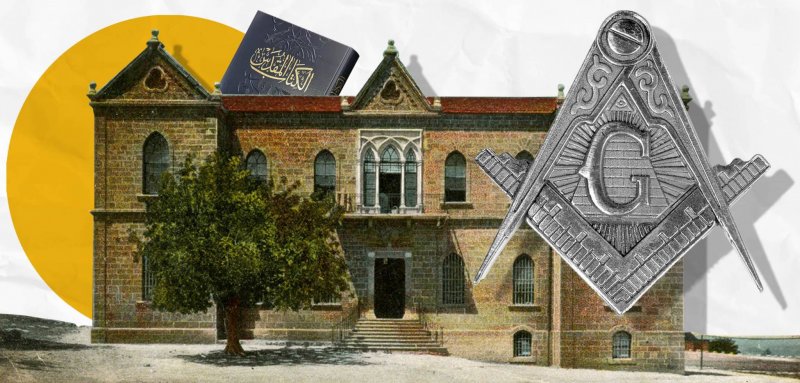Chances are that if you have heard about the Freemasons, it was in relation to some outlandish conspiracy theory blaming them for undermining religion or destroying society in general. The reality is probably a bit more mundane. It seems that Freemasons are probably not running the world from the shadows. But that doesn’t mean that they are not a fascinating organization. And they absolutely did have a major impact on some historical events. For example, they practically invented Modern Standard Arabic, the language used throughout the Arab world for most writing, publishing, and media production.
Even though Freemasons probably didn’t build the pyramids, and they didn’t exist in ancient Greece or Rome, they are an organization with a history reaching at least into the early modern period. The earliest documentary evidence traces the direct antecedents of modern Freemasonry to the British Isles in the seventeenth century. These antecedents were groups of actual stone masons.
Beirut witnessed an explosion of Masonic activity after the arrival of Protestant missionaries from USA in early 19th century. They believed that if the Levantines understood modern rational science and logic, they would easily convert to Protestantism
It can be speculated that the very rationalist and technical nature of the building trade led to the Freemasons’ preoccupation with rationality and scientific progress, two of the core values to which Freemasonry claims to observe to this day. Around the beginning of the seventeenth century, an important change began to occur in Freemasonry. As Masonic lodges gained a reputation as societies of skilled, learned artisans, they began to arouse the interest of people who were not builders. Membership of the lodges expanded to include other professionals. These professionals are referred to as speculative Freemasons, as opposed to operative Freemasons, who actually build things. Over the course of the next centuries operative Freemasonry as a skilled trade died out in Europe. The entire Masonic movement gradually transitioned to speculative Freemasonry. Speculative Freemasonry maintained some of the secret rituals of operative Freemasonry, although now devoid of their original practical purpose of identifying skilled builders. It also adhered to the values of Freemasonry, specifically mutual assistance, rationality, and belief in scientific progress.
Freemasonry arrived in the Ottoman Empire in the eighteenth century, in other words, around the time of the definitive shift from operative to speculative Freemasonry. Information on Masonic activity in Ottoman lands in the eighteenth and first half of the nineteenth century is scant and though the existence of some lodges is documented, they do not seem to have had a particularly long life. Freemasonry began to flourish in the Ottoman Empire thanks to the tanzimat reforms instituted in the mid-nineteenth century by the Ottoman government in a decades-long far-reaching effort to modernize the empire. One of the many effects of the tanzimat reforms was an increase in contacts between the Empire and European states, resulting in a rise in the population of European expatriates living in Ottoman lands. Some of these expatriates set up Masonic lodges and by the 1860s, they numbered more than a dozen. Although Freemasonry was initially introduced into the Ottoman Empire by Europeans, locals soon began to show an interest in it. Some joined mixed lodges that comprised both European and local members, others founded lodges composed of locals exclusively. Muslims, however, were generally hostile to Freemasonry and only a relatively small number joined the movement.
One of the major tenets of Protestantism is that every believer should be able to read the Bible directly in his/her native language with minimal need for interpretation by priests. The missionaries had to translate the bible to an understandable Arabic
Beirut witnessed an explosion of Masonic activity after the arrival of Protestant missionaries from the United States in the first decades of the nineteenth century. These missionaries, including the future founders of AUB like Daniel Bliss, Cornelius Van Dyck, and George Post, who are nowadays mostly known thanks to the streets, or AUB campus buildings, named after them, came to the Levant to, of course, convert locals to Protestantism. But they had a very specific idea about the nature of the Protestant religion that would shape their approach to missionary work, and would have a profound effect on the development of the Arabic language. They believed that Protestantism was a rational, scientific religion that, simply put, made logical sense. Hence, if only the locals in the Levant could understand modern rational science and logic, they would automatically convert to Protestantism.

Daniel Bliss
The question for the missionaries was, then, how to acquaint Levantines with modern science and rationality. The answer was, in principle, simple. They would give locals a first-rate education that would introduce them to the state of the art in science and rational thought. This education was to be delivered through a network of missionary schools, which included the Syrian Protestant College, founded in 1866. This was the institution that would later change its name to the American University of Beirut.
At the time, teaching at the Syrian Protestant College was done almost exclusively in Arabic, and this continued to be the case until the early twentieth century. Aside from the fact that it was deemed more practical to teach Arabs in their native language, there was another oddly specific reason for this. One of the major tenets of Protestant Christianity is that every believer should be able to read the Bible directly in his native language with minimal need for interpretation by religious authorities like priests (and I’m not being culturally insensitive in my use of the male pronoun here; even the enlightened Protestants weren’t completely sure women should be reading the Bible). This sets Protestantism apart from non-reformed Christian churches like Catholicism, Greek Orthodoxy, and the Maronite church, which, until the twentieth century, used versions of the Bible that were written in Latin, Greek, Syriac or one of a number of other dead Biblical languages that most of the believers simply did not understand. The idea that it was preferable to give readers direct access to knowledge in their native language presumably extended not just to religious books, but also to educational and scholarly texts.

Thus, in order to introduce the locals in the Levant to the Bible in Arabic, and preferably in a clear and understandable Arabic, the missionaries had to first create a translation of the Bible using this kind of language. At the time, a clear, widely-understandable, and widely available Arabic version of the Bible simply did not exist, because older Christian churches in Arabic-speaking regions had no use for it.
Hence, a team of missionaries and locals who had converted to Protestantism, under the leadership of Cornelius Van Dyck and Eli Smith, started working on an Arabic translation of the Bible, but they found that the syntax and vocabulary of Arabic in use at the time was too florid and complex. At the time they began their work, it was still considered the height of style to write Arabic in the form of rhyming prose, and this trend extended even to scholarly works of non-fiction. Probably the most famous nineteenth-century example of this style is Rifa’ Rafi’ al-Tahtawi’s comprehensive study of the technological, economic, and political achievements of French society called تخليص ابريز في تلخيص باريز (Takhlees ibriz fi talkhis Baris, translated into English, without the rhyme found in the original Arabic title, as An Imam in Paris). It is based on observations by Tahtawi during his stay in France in the years 1826-1831, and is written, in large part, in rhyme. Trying to talk about science and industry in poem is not conducive to pithy writing or easy comprehension.
The missionaries, therefore, adopted a different approach. They favored simple sentences with a simple structure, much like what is used in Arabic writing today. In 1860, they produced a Bible, still in limited use today, and known as the Van Dyck Bible. It does not break any of the grammar rules that existed in Arabic previously, but avoids contorted or needlessly complicated style.
In addition to the Bible, the missionaries and their local collaborators, in order to introduce Arabs to modern science and rationality, also had to render scientific textbooks and journals into Arabic. Here, they encountered another problem. Arabic vocabulary had simply not kept up with developments in science and scholarship and there were simply no words to describe some concepts that were being widely discussed in European languages. So, the authors of the new textbooks invented new words. They did it by deriving new forms from the roots of existing Arabic words. This is, for example, how Faris Shidyaq, a member of the team that translated the Bible and one of the first converts to Protestantism in the Levant, coined of the term ishtirakiya for socialism, using an existing Arabic root ك ر ش (sh r k). This is a new derivation from the root of a number of ancient Arabic words, most related to the concept of sharing or participation. It is found, for example, in the Koran, in words like شريك (sharik, usually translated as partner or equal). Many of these words are now part of the everyday vocabulary of Arabic.
Al-Ahram, Egypt’s leading newspaper, was founded by the Takla brothers, migrants from Lebanon. Possibly, that the outright majority of periodicals published in Cairo around the turn of the 20th century were either owned, funded, or edited by Levantines
By the second half of the nineteenth century, the use of Modern Standard Arabic had taken off, largely through the efforts of intellectuals educated in the missionary schools who became writers, editors, and publishers. Many of those affiliated with the Syrian Protestant College later moved to Egypt, which was fast becoming the hub for Arabic writing and publishing and enjoyed a freer intellectual atmosphere than Beirut. They went on to start some of the most influential early Arabic magazines like Al-Hilal (“The Crescent”), founded by Jurji Zaydan, formerly associated with SPC, and Al-Muqtattaf (“The Digest”), edited by Ya’qub Sarrouf and Faris Nimr, also lecturers at SPC before they moved to Egypt. Even Al-Ahram, to this day Egypt’s best-known newspaper, was founded by the Takla brothers, emigrants from what is today Lebanon. It is actually possible that the outright majority of periodicals being published in Cairo around the turn of the twentieth century were either owned, funded, or edited by people from the Levant, and large part of them had been associated with the Syrian Protestant College and other missionary schools.
Other periodicals associated with graduates of Levantine Protestant missionary schools, and written in Modern Standard Arabic, existed in other parts of the world. Faris Shidyaq, inventor of the Arabic word for socialism, founded the journal al-Jawaib (“Answers”) in Istanbul. Farah Antun, one of the first leftists in the Arab world, and also briefly a student of a Protestant missionary school, founded the journal al-Jami’a, which was first based in Egypt, and later relocated to the United States when Antun moved there in 1904.
In addition to the Bible several books also contributed significantly to the development of Modern Standard Arabic. In this category, of particular significance are an Arabic dictionary, Al-Muhit, and an Arabic encyclopedia, Dairat al-Ma’arif (“Circle of Knowledge”), both compiled by Butros al-Bustani, who also contributed significantly to the translation of the Bible. This encyclopedia and dictionary are among the first reference works using Modern Standard Arabic, and contributed significantly to the standardization of the new language.
It is hard to overstate the importance of these periodicals and books to the development of Modern Standard Arabic as a medium for educated, scholarly discourse. Thanks to the efforts of the literati behind them, the second half of the nineteenth century saw an explosion of writing and publishing using the new language, and this, combined with the rise of literacy truly turned Modern Standard Arabic into a mass pan-Arabic phenomenon.
At this point, before I start getting hate emails from USJ grads, I should probably say that it wasn’t only AUB that was behind the change in the Arabic language. AUB can be thought of as an intellectual hub and there were, of course, other similar hubs in other parts of the Arab world, also working on similar projects to simplify Arabic and promote the use of the new version of the language. The list of periodicals and books mentioned here that contributed to the development of Modern Standard Arabic is far from complete. And finally, even though Europeans and Americans, like Cornelius Van Dyke, got a lot of the credit for starting the translation and publication movement, most of the actual work was done by locals, many of whom were just as passionate about the project as the missionaries. But all caveats aside, considering the size of AUB and of Lebanon, the role played by AUB in the language reform process was probably decisive, and most certainly disproportional.
So what is the connection between the missionaries, AUB grads and Freemasons? Quite simply, a surprisingly large number of both the missionaries and the early graduates of the Syrian Protestant College were Freemasons. Bible translators Cornelius Van Dyck and Eli Smith were active Freemasons. The editor of Al-Muqtattaf Faris Nimr rose to the rank of Master of the Beirut Masonic Lodge. His co-editor Yacoub Sarrouf was also a Mason, as was Jurji Zaydan, editor of Al-Hilal. Butros al-Bustani, who wrote the Arabic dictionary, Al-Muhit, was also a Mason, as were a number of other Arabic intellectuals of the time such as Mikhail Mishaqa and journalist Shahin Makarios.[1] The list of second-tier Arab intellectuals who were Freemasons is too long and boring to allow each to be mentioned by name.
The contribution of Freemasonry to Modern Standard Arabic is probably in providing, in addition to the Syrian Protestant College and other similar fora, a space where interpersonal connections could be made, ideas exchanged, and scholarship discussed
In fact, a lot of the information available today on Freemasonry in nineteenth-century Beirut comes from the writings of Shahin Makarios, who was so proud to be a Mason that he wrote several books on Freemasonry. In one of them he relates how his early attempts to join a number of Masonic lodges in Beirut were unsuccessful. It took the personal intervention of Cornelius Van Dyck to secure him a membership of Le Liban lodge.
All of this is not to say that Masonic lodges were the site of conspiracies aiming to alter the Arabic language. Most likely, Beirut’s intellectuals were drawn to membership in Freemasonry, because Masonic lodges provided for open, uninhibited discussions among groups of like-minded, progressive, educated individuals, presumably in a pleasant social setting. Masonic lodges were also open to anyone who was sufficiently educated and well-to-do, regardless of religious or ethnic background, so they provided an escape from rigid social identities that prevailed in society at large. Since reforming the Arabic language was a lifelong passion for many of the Freemasons, it is reasonable to assume that this was a topic they discussed during their Masonic meetings. As such, the contribution of Freemasonry to the creation of Modern Standard Arabic is probably in that it provided, in addition to the Syrian Protestant College and other similar fora, a space where interpersonal connections could be made, ideas exchanged, and scholarship could be discussed. In this sense, the Masonic Lodges truly lived up to their stated goals of supporting scientific progress and rationality.
Raseef22 is a not for profit entity. Our focus is on quality journalism. Every contribution to the NasRaseef membership goes directly towards journalism production. We stand independent, not accepting corporate sponsorships, sponsored content or political funding.
Support our mission to keep Raseef22 available to all readers by clicking here!
Interested in writing with us? Check our pitch process here!



